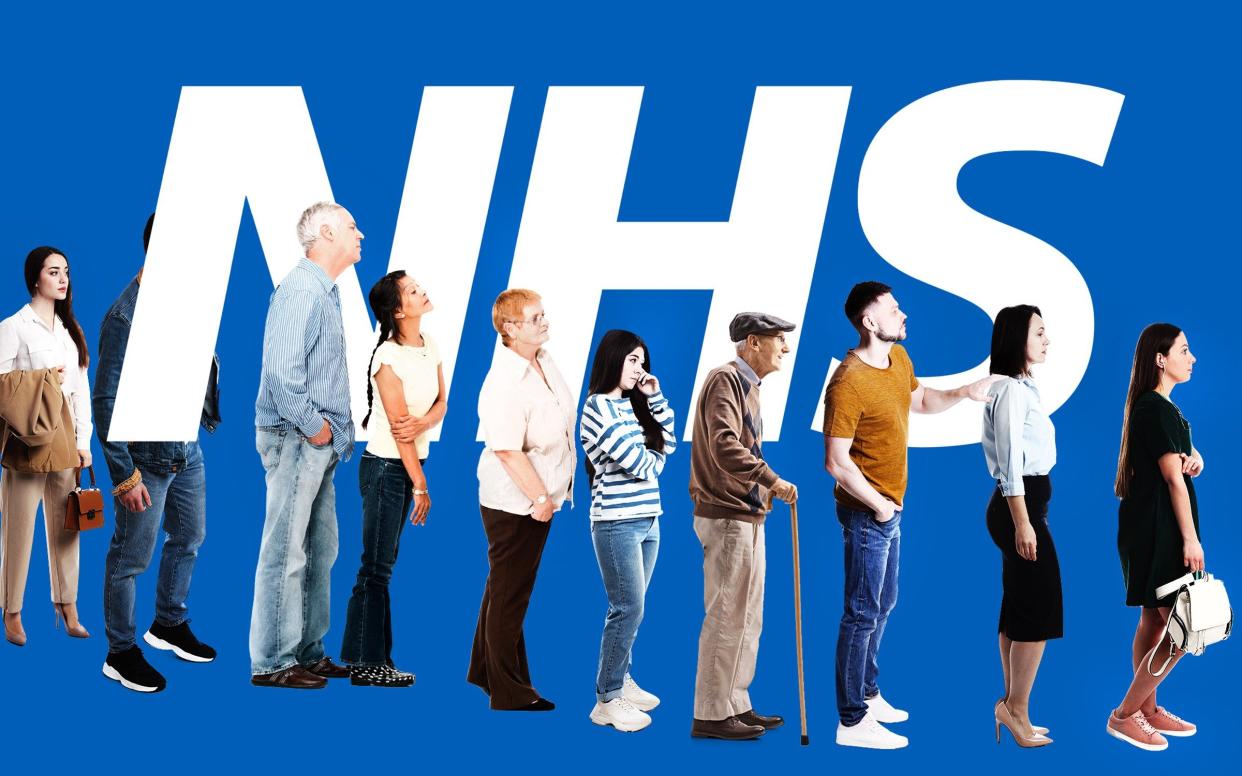NHS waiting lists could take 685 years to clear

The NHS waiting list will take 685 years to clear if it continues to fall at the current rate, figures reveal.
The overall waiting list remains “stubbornly high” at 7.53 million having fallen by just 916 people between February and March, all but putting an end to Rishi Sunak’s NHS pledge to cut the backlog.
If it continues to come down by such small margins, it would take 30 years to fall back to the level it was when the Prime Minister made his pledge – 7.21 million in January 2023 – and 685 years to be cleared altogether.
The latest figures also reveal that the NHS has missed its target to eliminate waits of more than 65 weeks, with 49,000 patients waiting a year and three months for an appointment, although this figure has halved in three months.
It comes after last month’s data revealed the waiting list had fallen by 36,100 but only because the same number of patients waiting for an appointment in a community service were removed.
Officials said it was because they were already included in a separate waiting list.
It means that the official backlog has technically fallen for six consecutive months and is down from a peak of 7.77 million in September 2023.
Siva Anandaciva, chief analyst at the King’s Fund, said: “The hospital waiting list remains stubbornly high at 7.5 million in March, representing 6.3 million people waiting, often in pain or unable to work, for treatment.
Mr Anandaciva said it was “patients and staff who are bearing the brunt of the deterioration in NHS performance over the past 10 years”.
The Health Secretary has insisted progress is being made, with the largest six-month fall of a quarter of a million fewer over six months, the biggest waiting list reduction in a decade.
Victoria Atkins said: “NHS staff are working tirelessly to cut the waiting list and today’s data shows the biggest six-month reduction in over 10 years outside of the pandemic.
“This is a significant achievement in the context of record pressures and strikes, with NHS analysis showing the list could have fallen by an extra 430,000 since December 2022 without industrial action.”
But even taking the average falls over the last six months, it would take a further nine months – beyond a general election – for the waiting list to reach the number that Rishi Sunak started on, and 16 years for the list to be entirely wiped out.
‘Broken pledges’
Wes Streeting, Labour’s shadow health secretary, said: “The Conservatives have failed to meet their pledge to end waits of more than 65 weeks and waiting lists are not falling.
“Rishi Sunak has broken every pledge he’s ever made on the NHS, causing patients to wait for months in pain and discomfort as a result.”
NHS emergency departments also endured their busiest April on record, up 10 per cent on last year, with 2.23 million people attending A&Es across England.
Tim Gardner, assistant director of policy at the Health Foundation, said: “While the pressure of winter has eased, today’s data shows urgent and emergency care is still feeling the strain.
“Over 42,000 patients spent more than 12 hours in A&E before being admitted to a bed last month, and one in 10 with a serious condition such as a stroke or chest pain waited over an hour for an ambulance.”
The NHS said it was “particularly encouraging” that the 28-day faster diagnosis target for cancer had been met for the second month in a row.
Almost 200,000, or 77 per cent, or patients received a diagnosis or the all-clear within four weeks of referral, exceeding the national target of 75 per cent.
NHS National Medical Director, Professor Sir Stephen Powis, said: “Today’s figures show just how hard NHS staff are working to deliver the best possible care for patients, despite ongoing significant demand and a difficult recovery journey – it is particularly encouraging to see we have met the 28-day faster diagnosis target for cancer for the second month in a row, making sure people receive a definitive diagnosis or the all-clear within four weeks, which we know is really important for patients.
“Improvements in urgent and emergency care continue, with ambulances responding to emergency calls faster, and more people being seen within four hours in A&Es despite a record April for attendances and admissions.
“The data also shows the huge efforts as part of the NHS elective recovery plan to treat those who have been waiting the longest for routine treatment are paying off, and while we know that there is further to go, we will continue to work to build on the improvements made so far throughout this year.”


